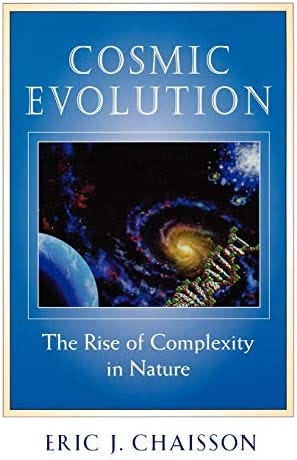If energy, information, and structural order are indeed all related, then we should expect to see a clear correlation between these measures in a complexifying universe. As entities move further from equilibrium, they should require more energy to sustain their informational richness and organizational depth. That is, we should expect to find greater energy flows per increasing measure of structural complexity.
And, indeed, that is precisely what the calculations reveal.
In his book Cosmic Evolution: The Rise of Complexity in Nature, Harvard physicist Eric Chaisson charts the universe’s trajectory towards greater complexity by mapping these interrelated measures across big history.
In full accordance with the Second Law, he writes,
the growing departure from thermodynamic equilibrium allows the cosmos to produce increasing amounts of net entropy and macroscopic information. We thereby have a means to appreciate in the main, if perhaps not yet understand the particulars, the observed rise in complexity throughout the eons of cosmic evolution.[i]
From an initial state of homogeneity soon after the Big Bang, the universe began to self-organize and complexify…
Figure 1.3. Departure from equilibrium
Figure 1.4. Energy rate density
Figure 1.5. Information[ii]
Chaisson’s graphs all show a cosmos moving further from equilibrium, with entities of increasing free energy rate density and informational richness over time.
Keep reading with a 7-day free trial
Subscribe to Brendan Graham Dempsey to keep reading this post and get 7 days of free access to the full post archives.






